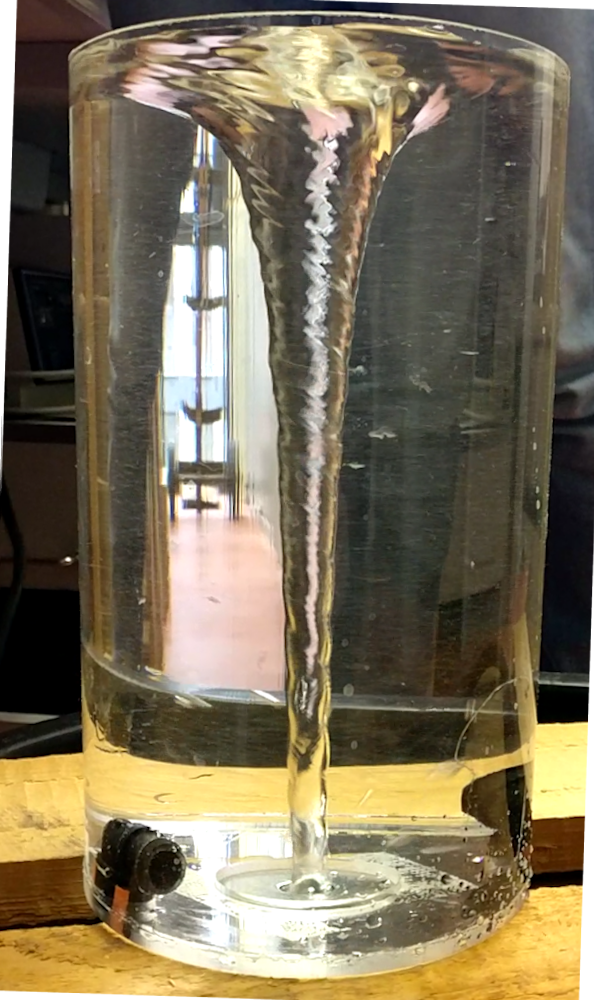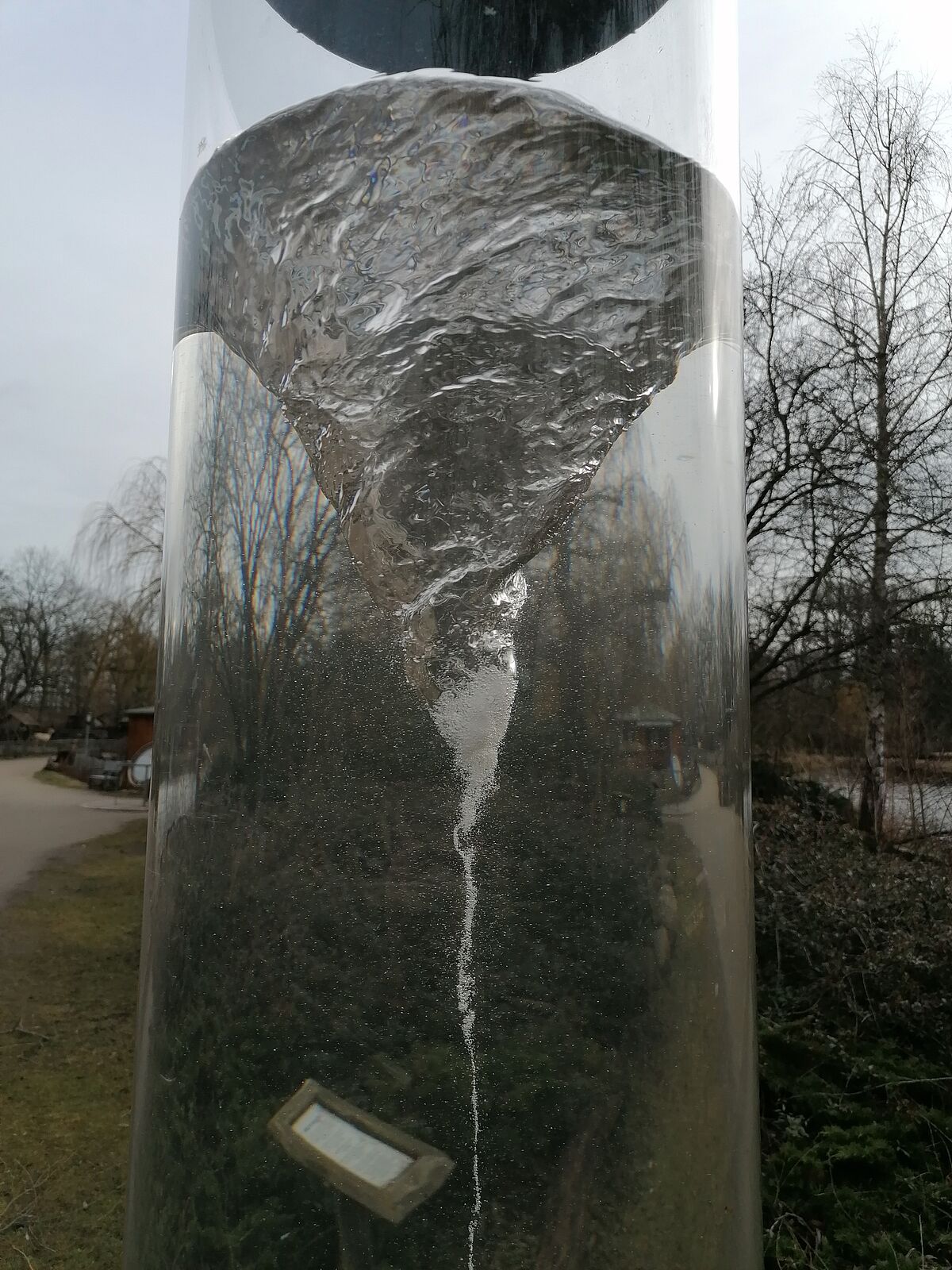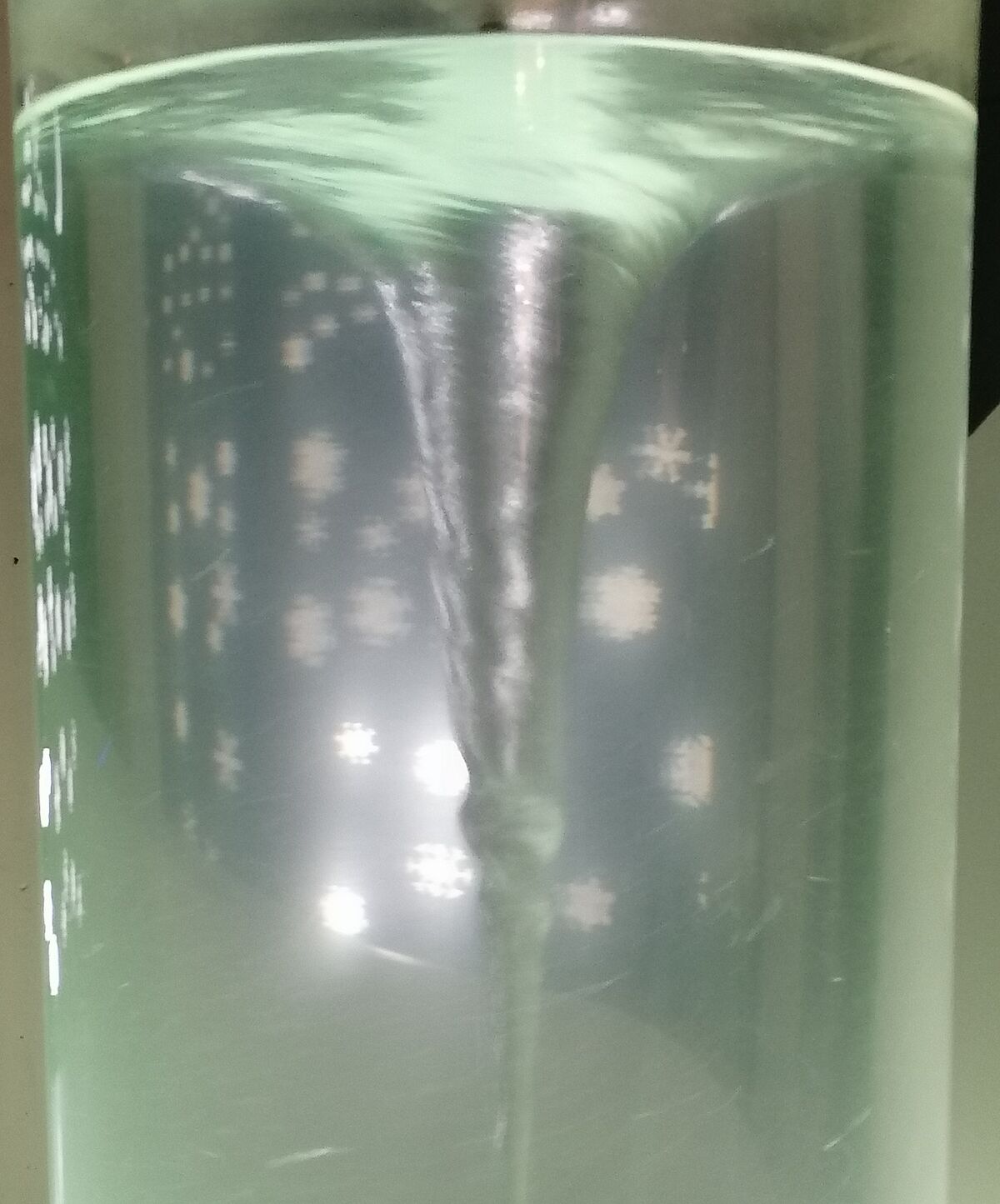

SWADEX-II
SWADEX-II opens a new avenue for studying the interaction between dust and gas in protoplanetary discs, relevant to grain growth and planet formation. Utilizing a water tornado by opposing water jet streams, a hyperbolic free surface is generated acting like a gravitational potential. The setup is diagnostically very accessible and geometrically flexible. We are able to demonstrate that tracer particles show a Keplerian rotation profile and conserved area speed, aligning with Kepler’s third and second law. One of the most advantages of this particular setup is its ability to achieve a large ratio between inner and outer radii, allowing for the study of global dynamics instead of local shear flows. The experiment enables the determination of dimensionless quantities such as the Reynolds number and the tracer particles’ Stokes numbers. The effective Reynolds numbers measured are within the range for turbulent protoplanetary discs. The observed Stokes numbers are in the range with the major dust component.
Publications
S. Knauer, S. Schütt, M. Flock, F. Scharmer, S. Haag, N. Fahrenkamp, A. Melzer, D.M. Siegel, P. Manz ‘A tornado-based laboratory model for Keplerian flows’, Monthly Notices of the Royal Astronomical Society 542, L67 (2025)
Water tornado



In the first version SWADEX-I we were able to observe outward transport of the angular momentum in viscoelastic shear flows. However, the shear flow profile was not that of an accretion disk. For this, the water surface must have a 1/r profile and not the one at the bottom. For SWADEX-II, a water tornado should now enable the 1/r profile at the water surface. We have developed a prototype for the generation of a stable water tornado.
